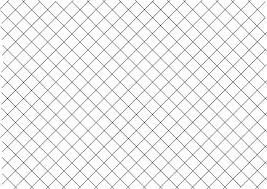612-470-8575
Thinking of Buying or Selling? We have top real estate partners nationwide! Reach out first for expert guidance and a home value report. Click the "Request a Quote" Button to connect!
How To Seal Concrete with Siloxane Sealer
Benefits of Siloxane Sealer:
• Stops water penetration to help prevent flaking, spalling, pop-outs and pitting of the concrete
• Resists stains
• Resists chemicals
• Protects from de-icing salt attacks which are very damaging to concrete
• Stops efflorescence – white discoloration patches on the concrete
• Enriches the color in decorative concrete
Materials Needed:
• Scrub Brush
• Water Source – hose or pressure washer (can be rented)
• Paint roller with a handle extension
• Paint Pan
• Optional: Choice of either painter’s plastic or drop cloths to protect surrounding areas from sealer
• TK Siloxane 290 Final Seal – coverage is 150 square feet per gallon, but porous surfaces may require 2 coats. If the sealer is blotchy after drying one coat, a second may be needed. This sealer is available at concrete supply stores.
How to Seal Concrete - Preparation
WHEN TO SEAL: Pick a time when rain is not forecast for at least 3 days. The manufacturer recommends that no rain fall on the product for at least 4-6 hours after application. Make sure the temperature will be above 40 degrees F. The surface must be frost free. If the concrete was newly poured, wait 28 days before applying this sealer.
Optional: As a precaution, shield glass, aluminum and plant life surrounding the concrete with either the painter’s plastic or drop cloths.
Step #1 - Wash
Thoroughly wash the surface to be sealed and let dry completely. Do not seal over wet concrete. It is best to wash one day and let dry a couple of days before sealing.
Use a hose and a broom with a mild cleaner such as dish soap or a commercial cleaner that may be found at a home improvement store.
If experienced with a power washer, this option is ideal to remove a lot of grease and surface stains, but take care to not concentrate the nozzle too close on any given area. Too much pressure may disintegrate the concrete surface. Please exercise caution and don’t set the pounds per pressure above 3500 PSI.
WAIT until COMPLETELY DRY – minimum of 2 days is recommended.
Step #2 – Prepare Product and Plan
Pour a small amount into the paint pan. Do not dilute.
Plan your approach in applying the sealer – only one section at a time and no bigger than the distance of the extension handle in an extended position. Work backwards through the concrete and one square (section) at a time so newly-applied areas are not walked on.
Step #3 – Apply the Sealer
Dip the roller into the product (pan) and evenly distribute the sealer on the roller (just like painting).
Use a quick mopping action to spread the product evenly, getting the surface completely wet with product. Once applied, don’t step into the application area.
Back-roll across the area just rolled using a cross-hatch pattern:

This helps to uniformly distribute the product, spread out drips, and fill in gaps and thin areas. Apply quickly so it dissolves any existing cure and seal coating without re-hardening during application. This will open any previous concrete coatings and allow the final seal to penetrate the surface adequately within the application window.
Continue rolling until the material stops moving with the motion of your roller – it will get sticky, forming a cobweb of material between the surface and the roller (this may not happen in cooler weather).
Step #4 – Let Dry Thoroughly
Wait 1 hour. If the color is blotchy or sparse, place an additional coat over these areas.
After the last coat, wait at least 6 hours, preferably 24 hours to open the area to traffic.
TIP: For spills and cleaning equipment, use the solvent xylene. Make sure gloves are worn to avoid exposure to this product.
If wear patterns occur over time, an additional coat may be applied to the affected areas only. Do not over-seal.
Concrete Sealer › How To Seal Concrete
License # BC721668




